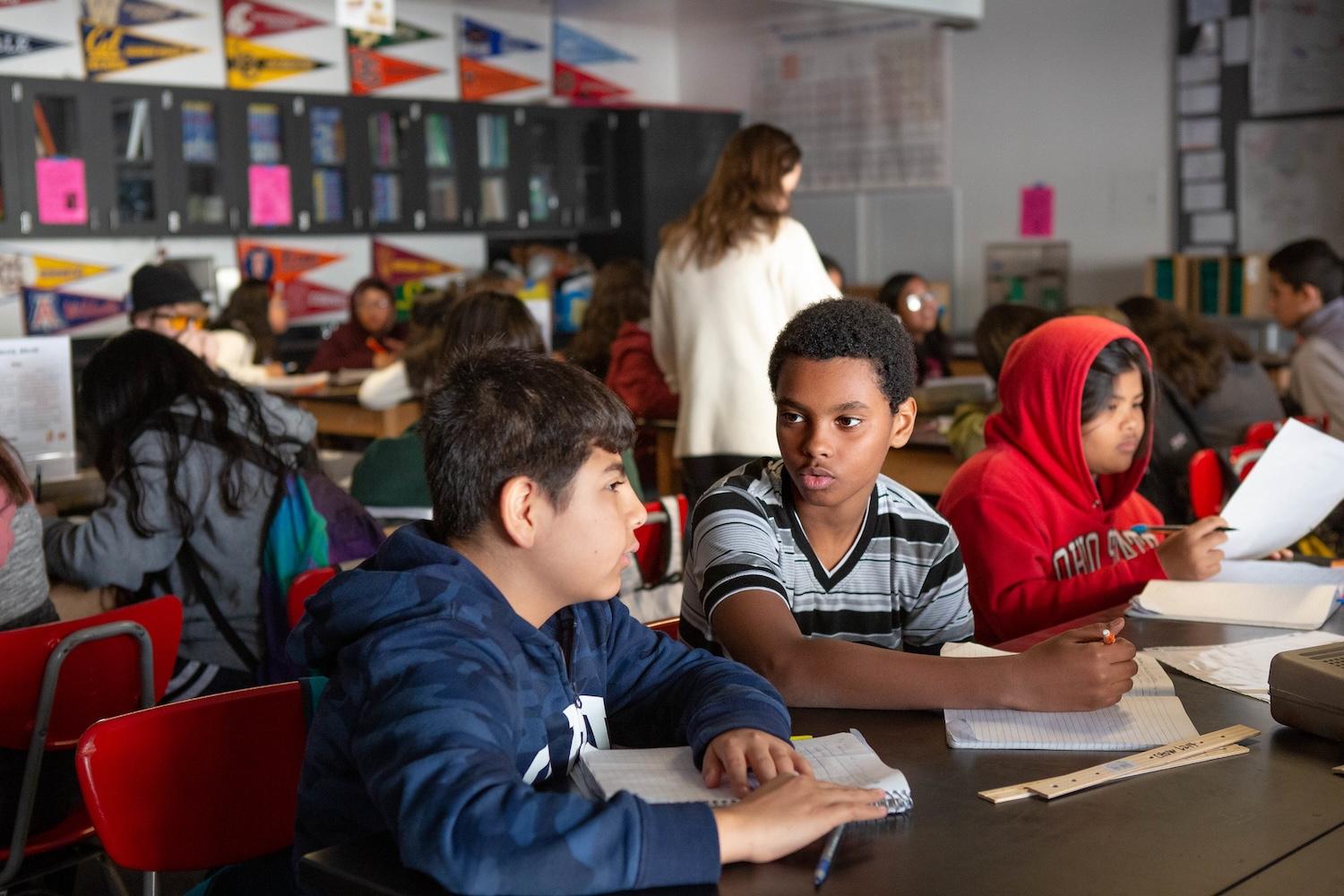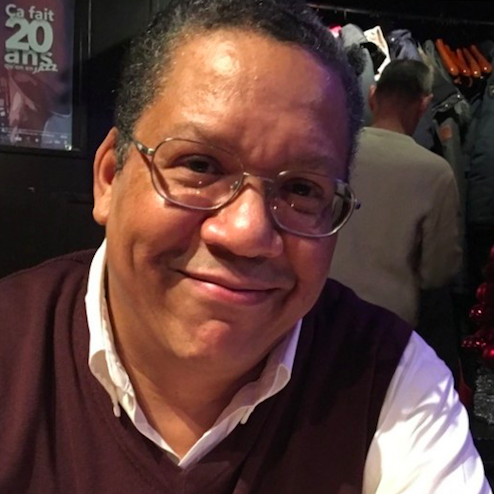
Students work together on an assignment about ecosystems and environmental impacts during a seventh-grade science class in December 2020. While more schools are introducing sustainability curriculum, some are struggling to get started. (Image credit: Allison Shelley for EDUimages via Flickr)
Elementary and secondary school teachers want to teach about sustainability, yet many lack the time, resources, and in particular, the tools to do so effectively. For those in the United States, help is on the way.
By 2030, the Sustainability Education Coalition aims to give more than 10 million K-12 students access to educational resources that will help them make informed decisions and take responsible actions when it comes to sustainability.
It’s a first-of-its-kind initiative aligned with the United Nations Sustainable Development Goals and launched by Discovery Education, a leader in developing digital content for K-12 teaching.
“The need for comprehensive sustainability education has never been more pressing,” Amy Nakamoto, Discovery Education’s general manager of social impact, said in a statement. “Recent statistics reveal a concerning trend: While the majority of teachers recognize the importance of teaching students about climate and sustainability, only half of them are currently addressing these vital topics within their classrooms.”
Three factors hinder teaching sustainability to K-12 students in the U.S., Natamoto said. First, some teachers have difficulty figuring out where classes on sustainability belong in their curricula.
“It could be in science classrooms, it could be in social studies classrooms, it could be in blended STEM [science, technology, engineering and math] classrooms. I think currently, teachers are having a hard time figuring out where it fits in the school day," Nakamoto told TriplePundit.
Others feel they do not know how to teach sustainability topics, she said. Teachers need and want more support in this area, according to a report from the Smithsonian Science Education Center. Of the teachers surveyed, 69 percent said professional development on sustainability would be helpful.
“They want to be able to talk about this with their students, but they don’t know how,” Nakamoto told us. Lastly, while school administrators believe sustainability is a critically important topic to teach, they don’t know how to get the resources to do so, she said.
The Sustainability Education Coalition aims to solve all three problems. It uses insight and expertise from partner companies to create digital content for students to learn from alongside the lessons on the Discovery Education Experience learning platform, Nakamoto said. Support is specifically focused on providing STEM and sustainability education resources to school districts that would struggle to access them otherwise.
“Another way the collaboration happens, in addition to the curriculum and the content, is through strategic thought leadership that takes educators and administrators and puts them in the same rooms as these leading companies,” Nakamoto said. “So [the companies] can understand the challenges of schools to talk about these topics, and the schools and administrators can understand how companies are wrestling with these topics in more real-time.”
On the other side, company partners benefit from joining the coalition through employee engagement, Nakamoto said. Employees want to see their companies investing in initiatives that align their corporate mission with a local community mission.
“Employee engagement is leveraging the employees of our partners to be part of the story. So, we are telling their stories, we are filming them and the solutions they’re doing,” Nakamoto said. “We deeply believe in showing the people who are the leaders in this movement to the students in classrooms across the U.S.”
So far, Subaru of America, LyondellBasell, Nucor, Honeywell, and the National Environmental Education Foundation have partnered with the coalition. Each company that joins helps to unlock access to a complete library of STEM and sustainability education resources for some critical communities, Nakamoto said.
“[Sustainability] is a topic that everybody is both wrestling with and evolving with at the same time,” she concluded. “We have a big vision to grow this to represent multiple sectors, multiple interests because the sustainability story is an everyday story that we all experience just walking through the world. In order to tell that story to students, we need to be influenced by all of the sectors that are engaged in sustainability at their corporate and community level.”

Gary E. Frank is a writer with more than 30 years of experience encompassing journalism, marketing, media relations, speech writing, university communications and corporate communications.














